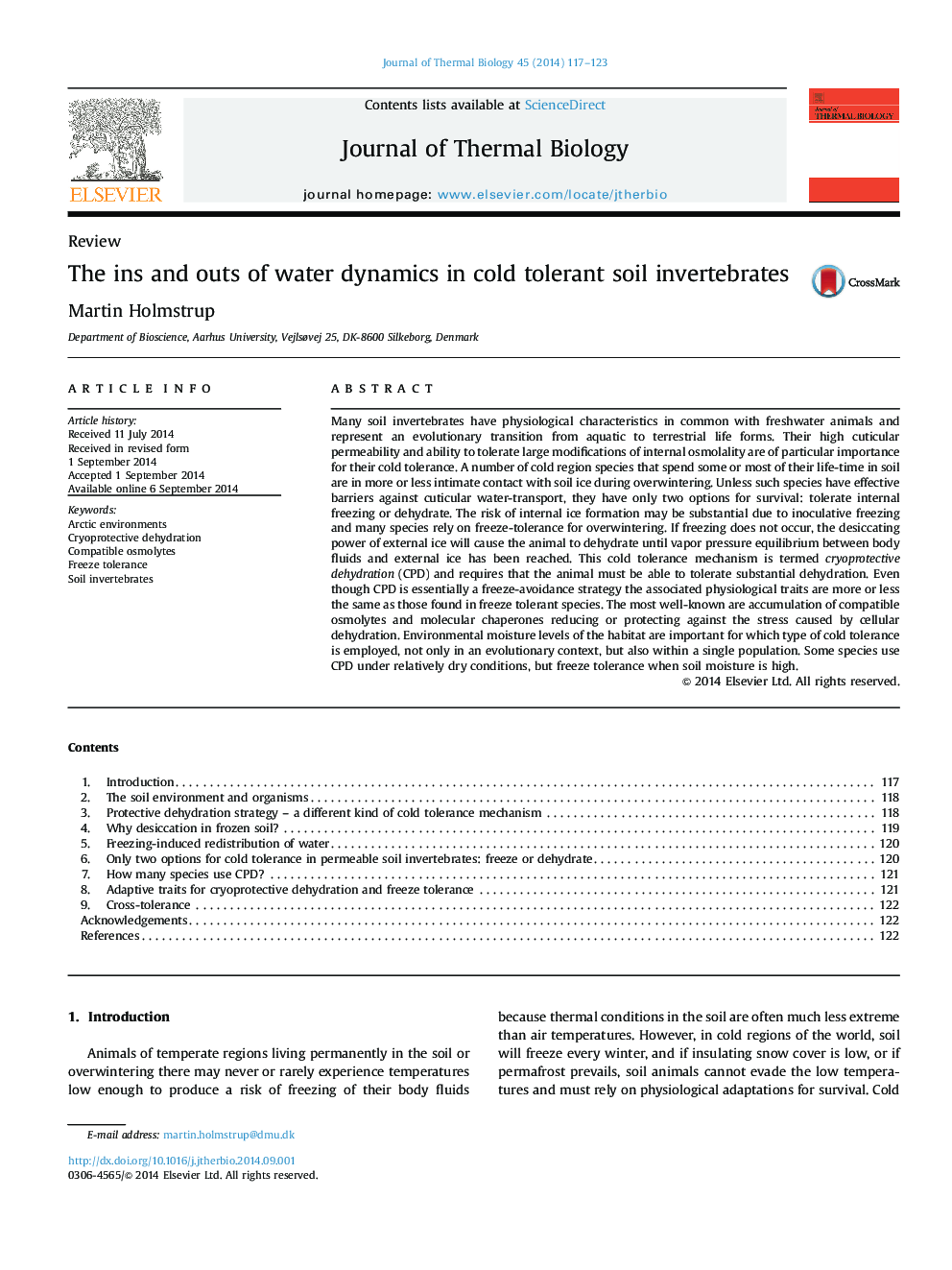| کد مقاله | کد نشریه | سال انتشار | مقاله انگلیسی | نسخه تمام متن |
|---|---|---|---|---|
| 2842871 | 1571100 | 2014 | 7 صفحه PDF | دانلود رایگان |
• Cryoprotective dehydration is probably widespread among soil invertebrates.
• There is a large overlap between cryoprotective dehydration and freeze tolerance.
• Soil invertebrates have only two options: freeze or dehydrate.
Many soil invertebrates have physiological characteristics in common with freshwater animals and represent an evolutionary transition from aquatic to terrestrial life forms. Their high cuticular permeability and ability to tolerate large modifications of internal osmolality are of particular importance for their cold tolerance. A number of cold region species that spend some or most of their life-time in soil are in more or less intimate contact with soil ice during overwintering. Unless such species have effective barriers against cuticular water-transport, they have only two options for survival: tolerate internal freezing or dehydrate. The risk of internal ice formation may be substantial due to inoculative freezing and many species rely on freeze-tolerance for overwintering. If freezing does not occur, the desiccating power of external ice will cause the animal to dehydrate until vapor pressure equilibrium between body fluids and external ice has been reached. This cold tolerance mechanism is termed cryoprotective dehydration (CPD) and requires that the animal must be able to tolerate substantial dehydration. Even though CPD is essentially a freeze-avoidance strategy the associated physiological traits are more or less the same as those found in freeze tolerant species. The most well-known are accumulation of compatible osmolytes and molecular chaperones reducing or protecting against the stress caused by cellular dehydration. Environmental moisture levels of the habitat are important for which type of cold tolerance is employed, not only in an evolutionary context, but also within a single population. Some species use CPD under relatively dry conditions, but freeze tolerance when soil moisture is high.
Journal: Journal of Thermal Biology - Volume 45, October 2014, Pages 117–123
